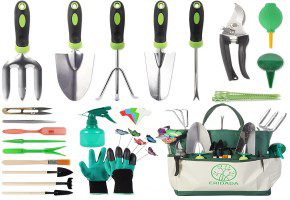- Cluck & Cash In: Navigate the Chicken Road Game for High-RTP Wins & Up to $20,000!
- Understanding the Core Mechanics of the Chicken Road Game
- Difficulty Levels and Their Impact on Gameplay
- The Role of RTP and Variance in Player Experience
- Strategies for Maximizing Your Chances of Winning
- Responsible Gaming Considerations
Cluck & Cash In: Navigate the Chicken Road Game for High-RTP Wins & Up to $20,000!
The world of online casino gaming is constantly evolving, with new and innovative games emerging to captivate players. Among these, the chicken road game has gained significant traction, offering a unique blend of simplicity, excitement, and potentially lucrative rewards. This fast-paced crash game combines elements of risk and reward, attracting a diverse range of players seeking quick wins and thrilling gameplay. With its straightforward mechanics and high Return to Player (RTP) percentage, it’s quickly becoming a favorite among those looking for a dynamic gaming experience.
Understanding the Core Mechanics of the Chicken Road Game
At its heart, the chicken road game centers around a brave poultry protagonist attempting a perilous journey across a series of increasingly busy roads. The game’s visual appeal is undeniable, with vibrant graphics and an animated chicken constantly navigating the lanes. Each round begins with a small initial bet, which players can adjust within a defined range, typically from $0.01 to $200. As the chicken successfully crosses each lane, a multiplier increases, directly impacting the potential payout. The longer the chicken survives, the higher the multiplier climbs, and the greater the winnings become.
However, the key element is timing. Players aren’t passively watching; they have the crucial ability to ‘cash out’ at any moment during the chicken’s journey. Cashing out locks in the current multiplier, resulting in a win. But if the chicken is struck by a vehicle – a common occurrence, given the increasing traffic – the round ends, and the initial bet is lost. This element of risk versus reward is what makes the chicken road game so compelling.
The game’s simplicity belies a strategic depth. Players must gauge their risk tolerance and decide when to cash out, balancing the desire for higher multipliers with the very real possibility of losing their stake. Mastering this timing is crucial to consistent success. Understanding the volatility of the game is also essential; while frequent small wins are possible, the allure of larger payouts keeps players engaged.
Difficulty Levels and Their Impact on Gameplay
Adding further complexity and catering to a wider range of player preferences, the chicken road game typically offers several difficulty levels. These levels directly influence the traffic density and, consequently, the risk associated with each round. Here’s a breakdown of the common difficulty settings:
| Easy | 25 | 1/25 | Lowest risk level, with significantly fewer vehicles on the road. Ideal for beginners or cautious players. |
| Medium | 22 | 3/25 | Moderate risk. Traffic density increases, demanding quicker reaction times and more strategic cashing out. |
| Hard | 20 | 5/25 | High risk. Significantly faster and more frequent traffic. Requires skill and calculated risk-taking. |
| Hardcore | 15 | 10/25 | Extremely high risk. Fastest and most chaotic traffic patterns. Only recommended for experienced players with high risk tolerance. |
The ‘Risk Factor’ represents the approximate probability of the chicken being hit on each lane. As the difficulty increases, the potential for higher multipliers also increases, but so does the risk of losing your bet. This element is important for understanding the statistical chances of winning or losing.
Choosing the right difficulty level is crucial to enjoying the chicken road game. Beginners should start with ‘Easy’ to get a feel for the mechanics and learn to time their cash-outs effectively. More experienced players might gravitate towards ‘Hard’ or ‘Hardcore’ for the increased potential rewards, but they should be prepared for the higher risk involved.
The Role of RTP and Variance in Player Experience
Return to Player (RTP) is a critical metric for any online casino game, representing the percentage of wagered money that is returned to players over an extended period. The chicken road game typically boasts a highly competitive RTP of 98%, meaning that, on average, players receive $98 back for every $100 wagered. A high RTP is a huge draw to new and returning players.
However, RTP is a long-term average and doesn’t guarantee individual winnings. Variance, also known as volatility, describes how often and how much the game pays out. The chicken road game generally has a medium-to-high variance, meaning that while large wins are possible, they may not occur frequently. Players should expect periods of both wins and losses.
- High RTP (98%): A favorable attribute, increasing long-term winning potential.
- Medium-High Variance: Suggests the possibility of substantial payouts but also requires patience and strategic betting.
- Short-Term Fluctuations: Players should be prepared for swings in fortune, recognizing that RTP is calculated over millions of rounds.
Understanding both RTP and variance is crucial for responsible gameplay. Players should never bet more than they can afford to lose and should approach the game with realistic expectations.
Strategies for Maximizing Your Chances of Winning
While the chicken road game fundamentally relies on luck, certain strategies can significantly enhance your chances of winning. One common tactic is the ‘Martingale’ system, where players double their bet after each loss, aiming to recoup previous losses with a single win. However, this strategy can be risky, requiring significant capital and potentially leading to substantial losses if a losing streak continues. Another approach involves setting profit targets and stop-loss limits. This proactive method helps players walk away with winnings while minimizing potential damage.
Another effective strategy is to gradually ‘cash out’ at increasing multipliers. Instead of holding out for the highest possible payout and risking a loss, smaller, frequent wins can build up over time. Playing at lower difficulty levels initially and progressively increasing the challenge as skill improves is also beneficial. Understanding when a round is likely to end by observing the speed & number of approaching vehicles is also very important.
Responsible Gaming Considerations
The excitement and fast-paced nature of the chicken road game can be addictive. It’s vital to practice responsible gaming habits. This includes setting realistic budgets, sticking to predetermined limits, and avoiding chasing losses. Recognizing the signs of problem gambling, such as spending more time or money on the game than intended, is crucial.
- Setting Budgets: Determine a maximum amount you are willing to wager and never exceed it.
- Time Limits: Establish a time limit for your gaming sessions to prevent excessive play.
- Avoid Chasing Losses: Resist the urge to increase your bets in an attempt to recoup previous losses.
- Self-Exclusion: Utilize self-exclusion tools offered by online casinos if you feel you are losing control.
Remember, casino games should be a form of entertainment, not a source of income. If you or someone you know is struggling with problem gambling, seek help from a reputable organization.
The chicken road game provides a novel and captivating gaming experience. Whether you’re a seasoned casino veteran or a newcomer to online gambling, its straightforward mechanics, adjustable difficulty levels, and high RTP make it a compelling choice. By understanding the core dynamics, employing strategic approaches, and prioritizing responsible gaming, players can maximize their enjoyment and potentially reap rewarding benefits.




 Round Rugs
Round Rugs  Wool Rugs
Wool Rugs  Vintage Rugs
Vintage Rugs 


 Carpet Tiles
Carpet Tiles  Carpet
Carpet 
 Embossed Rug
Embossed Rug  Plain Rug
Plain Rug 
 2.5'*4'
2.5'*4'  2'*3'
2'*3'  3'*5'
3'*5'  5*7.5
5*7.5 













 Artificial Grass
Artificial Grass  Mats
Mats 
 Soil
Soil  Fertilizer
Fertilizer  Pesticides
Pesticides